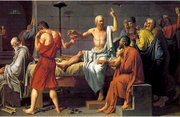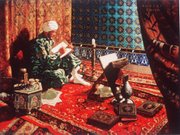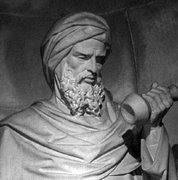Question
Can romance novel be a type of Islamic literature?
A. Introduction
In the Eickelman and Anderson, 1999, in the Muslim World, Maimuna Huq wrote that how romance novel can be a suggestion and a message that implied moral and ethic. She begin her writing with the reaction of Bangladeshi toward the controversial novel lajja written by Bangladeshi feminist-secularist writer Tasleema Nasreen, it seemed to demonstrate the growing strength of Islamic “fundamentalism” in Bangladesh. Further, she explain that some enjoy reading her works and some “fundamentalists” write novel themselves-romantic ones with hard cover as “secularly” and provocatively illustrated as Nasreen’s, a style and language as contemporary as hers, and plots equally laden with the suffering of women in an unjust society, paradoxically, the producers and readers of these novels consider them “Islamic” works, so do not deem them objectionable. It shows us how the “symbolic Islam” and all product that come from “fundamentalists” has already so-called taken for granted. It is similar to Charles Lindholm research about Muslim daily life, he said that before the coming of anthropology to understand Islam and Muslim daily life, the rural tribal Muslim only bothered about using the Sheikh to resolve their conflict and took the authority of religion for granted. She added that most scholars of Bangladesh attribute the recent and unexpected growth in Islamic activism to “internal” effort to the state and “external” efforts of Middle Eastern countries. It shows us how it related to Olivier Roy description about the interventions of “islamist” or “neo-fundamentalist” in spreading secularization within Islam (Roy 2002: 25-57)
Huq’s article on new media in the Muslim world (here, she take Bangladesh as her object) identifies that romance novel as a form of media products that are consumed by the Bengali middle classes. She identifies how “islamist” writers and publisher have in the past written about piety and ritual related themes while increasingly more and more of this literature is changing its form. She shows how a lot of the new publications are written in the genre of romance novels with implied on moral messages.
B. Mas’ala Texts, Biographies, Booklets and Novels
Mas’ala texts provide detailed and specific information on how to benefit from Qur’anic verses in various aspects of life-health, intellectual ability, socio-economic well being, family affairs, and the attainment of greater virtue or sawab for success in the Life After Death. Most of Islamic literature produced between 1971-1975 focused on mas’ala. The books enjoy wide popularity, although both Islamic and secular activists tend to look down on them.
Mas’ala text play a significant role in shaping public consciousness of Islam by encouraging a ritual-based piety in readers. The content of the books spreads quickly by words of mouth, especially in the densely packed middle class and lower middle class neighborhoods, foregrounding Islam and the Qur’an in daily practice, even if the text do not encourage explanations. More like handbooks than discursive formations, Mas’ala texts appeal to a majority of the madrassa-educated.
Lacking in secular modalities for meaningful renderings of sacred phenomena, mas’ala texts fail to engage a majority of the modern-educated, who are reluctant to perceive a text as authoritative and interesting simply because it’s full of Qur’anic verses and a text as authoritative and interesting simply because it’s full of Qur’anic verses and hadith. While the newer mas’ala texts respond to shifting criteria for persuasiveness more effectively than older ones, they do not compete well with more recent booklets and novel in attracting reader in society with rising levels of modern/secular higher education, especially readers from influential circle.
Like mas’ala texts, biographies are an old literary form, one that constituted a very popular category of Muslim Bengali literature during the nineteenth and early twentieth centuries. They are one of the few types of Islamic literature available in general bookstores, probably because of their apolitical nature, easy-read style, and suitability for both adult and children. The texts are primarily stored at stores affiliated with Islamists groups and located around group headquarters or mosques that tend to be Islamists strongholds, such us Kantaban Mosque in Dhaka.
One example of the new biographies is Sirate Ibnu Hisham, translated from Arabic into Bangla by Akram Farooq and first published in 1988, this biography of the prophet Muhammad is much longer and of a more “authoritative” or “serious” appearance than most popular biographies. Another biography is Rasulullah Biplabi Jiban (The Revolutionary Life of the Messenger of Allah).
Booklet started to appear in noticeable numbers in 1970s. As far as the basic nature of their contents is concerned, of course they can be traced to “social” and “political” works of 19th and early 20th century punthi literature. current booklets are cheap and readable because they adhere closely to colloquial Bangla and treat specific issue. The production of most mas’ala and traditional biographical texts is not directly connected to Islamic activism, but most authors, publishers, and readers of booklets are affiliated with various Islamic groups.
While some Islamists do not accept novel as “Islamic” literature, according to Huq, some Islamic publishers see novels becoming the most popular form of Islamic writing in the near future. Most importantly, added Huq, perhaps these novels bridge the gap between the type of romantic novels written by Nasreen, who advocate transcendence of all social mores and attack religious values, and normative Islamic literature, which is preoccupied with reaffirming Islamic principles, purifying society, and decrying the moral depravity of various Bengali cultural practices.
Among more contemporary Islamic novels are series of paperback thriller such as Thypoon and Saimoom, which closely resemble secular series like Masud Rana and Western in both writing and appearance style. Most important, stressed Huq, romantic fiction, as a popular performative genre and emblem, is a powerful pathway to the heart of the national imagination. Speaking in general term, Huq added, madrassa students tend to read romantic novels by Islam-orientd writers; Bengale-medium students read novels by secularly oriented writers.
Reading between the lines in such novels where Islam barely perceptible, one could perhaps see in them certain implicit Islamic messages, such as the ill of extra-marital sexual relations and of free mixing, and the need to uproot prostitution. However, such views are also fully consonant with popular Bengali cultural ideology. Instead of relying on Islam for legitimizing a particular social value, as early generations of Islamists in the region tended to do, contemporary Islamic novelist draw on the authority of popular notions of “cultural decency”.(Huq, 1999:134-151)
C. Conclusion
It remains difficult to define “Islamic” literature, especially since there is little consensus among readers: Islamic is a volatile signifier. But looking on several kinds of Islamic literature tell us several things.
First, mas’ala texts, biographies and booklets exemplify an “objectification” of the Muslim consciousness-codification, principles, citation from the Qur’an and hadith, and recognizable forms of authority.
Second, novel depict a different type of objectification: Islam is objectified not through apparent systematicity, coherence, organization, and the positing of clear-cut difference but through the openness of cultural symbols and shared local notions, the presence of Islamic element like premarital romance, the voicelessness of religious authority, and the absence of particularity.
Third, variety in Islamic literature, even within a specific category such as the novel, reflects a pluralistic view of Islam.
Forth, types of literature such as thrillers and romantic novels indicate attempts to talk about religion in ways that undercut either “secularist” or “fundamentalist” approach to Islam.
Fifth, closeness in form between secular and Islamic writing styles, as is evident in the novel, reflects complex interactions between formal, secular, higher education and informal religious training, especially in the case of writers affiliated with the politic Islam.
Sixth, while the recent varieties of Islamic literature do not have massive audiences, they are often aimed at and read by those from the prestigious circle of upwardly mobile professionals, the powerful communities of high school, college and university students, and the influential associations of small and big businessman. (Huq, 1999:152-155)
Last, Maimuna Huq thesis is related –implicitly- to sociological theory of Lindholm and Roy as we mention above, and according to Huq, romance novels can be assumed as a type of Islamic literature. Because, a lot of the new publications are written in the genre of romance novels with implied on moral messages and of course religious doctrine of daily life.
Sunday, 29 June 2008
Subscribe to:
Post Comments (Atom)




No comments:
Post a Comment